
CodeNotes: Relining Building Sewers and Building Drains in the I-Codes
Addressing the code requirements in section 717 of the International Plumbing Code and section P3011 of the International Residential Code.
This edition of CodeNotes — Relining Building Sewers and Building Drains in the I-Codes — is based on Section 717 of the 2021 International Plumbing Code and Section P3011 of the 2021 International Residential Code.
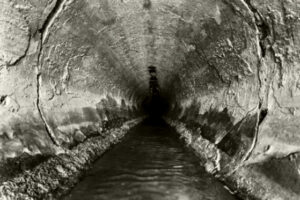
Introduction
The 2021 International Plumbing Code® (IPC) and the 2021 International Residential Code® (IRC) recognize various available technologies for the relining of existing building sewer and building drainage piping while also providing the necessary inspection procedures that ensure a safe and efficient pipe lining installation. These lining methods require little or no digging and use significantly less time to complete than conventional pipe installation methods. They are suitable for repairing both short and long runs of pipes that do not need to be increased in size. This CodeNote covers the process referred to as the “fold and form pipe (FFP)” method of pipe restoration for relining of building sewers and building drains found in the I-Codes.
Let’s start by addressing the code requirements in section 717 of the IPC and section P3011 of the IRC. These requirements are part of a toolbox of solutions that are offered to address the failing infrastructure of the built environment. IRC Section P3011 “Relining of Building Sewers and Building Drains” mirrors section 717 of the IPC. Prior to the 2021 codes, relining of building sewers by the PVC fold and form method was recognized in the IRC only; the IPC recognized no method of pipe relining.
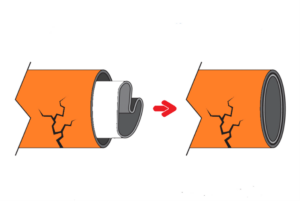
Code Requirements
Section 717 of the IPC® and section P3011 of the IRC® cover fold and form pipe (FFP) method of pipe restoration. A factory-made extruded thermoplastic folded liner is pulled into a cleaned existing pipe, expanded with air and steam (steam for softening the liner to allow unfolding) and then allowed to cool (using air pressure only) to form a new pipe within the existing pipe. Fold and-form pipelines must comply with their product standards, ASTM F1871 and ASTM F1504. The product standard defines the requirements of materials, size, wall thickness and marking. These ASTM standards cover quality assurance/control (QA/QC) test methods and requirements. Products complying with ASTM 1504 require installation per ASTM 1947, whereas products complying with ASTM 1871 require installation as per ASTM F1867.
Section 717 (P3011)
Relining, Building Sewers and Building Drains
717.1 (P3011.1) General. This section shall govern the relining of existing building sewers and building drainage piping.
717.2 (P3011.2) Applicability. The relining of existing building sewers and building drainage piping shall be limited to gravity drainage piping 4 inches (102 mm) in diameter and larger. The relined piping shall be of the same nominal size as the existing piping.
717.3 (P3011.3) Pre-installation requirements. Prior to commencement of the relining installation, the existing piping sections to be relined shall be descaled and cleaned. After the cleaning process has occurred and water has been flushed through the system, the piping shall be inspected internally by a recorded video camera survey.
717.3.1 (P3011.3.1) Pre-installation recorded video camera survey. The video survey shall include verification of the project address location. The video shall include notations of the cleanout and fitting locations, and the approximate depth of the existing piping. The video shall also include notations of the length of piping at intervals not greater than 25 feet (7620 mm).
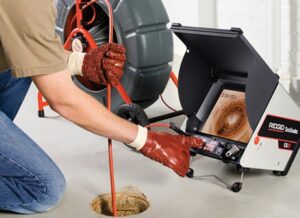
717.4 (P3011.4) Permitting. Prior to permit issuance, the code official shall review and evaluate the pre-installation recorded video camera survey to determine if the piping system is able to be relined in accordance with the proposed lining system manufacturer’s installation requirements and applicable referenced standards.
717.5 (P3011.5) Prohibited applications. Where review of the pre-installation recorded video camera survey reveals that piping systems are not installed correctly or defects exist, relining shall not be permitted. The defective portions of piping shall be exposed and repaired with pipe and fittings in accordance with this code. Defects include, but are not limited to, back-grade or insufficient slope, complete pipe wall deterioration or complete separations such as from tree root invasion or improper support.
717.6 (P3011.6) Relining materials. The relining materials shall be manufactured in compliance with applicable standards and certified as required in Section 303(P2609). Fold-and-form pipe reline materials shall be manufactured in compliance with ASTM F1504 or ASTM F1871.
717.7(P3011.7) Installation. The installation of relining materials shall be performed in accordance with the manufacturer’s installation instructions, applicable referenced standards and this code.
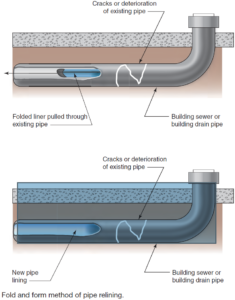
717.7.1 (P3011.7.1) Material data report. The installer shall record the data as required by the relining material manufacturer and applicable standards. The recorded data shall include but is not limited to the location of the project, relining material type, amount of product installed and conditions of the installation. A copy of the data report shall be provided to the code official prior to final approval.
717.8 (P3011.8) Post-installation recorded video camera survey. The completed, relined piping system shall be inspected internally by a recorded video camera survey after the system has been flushed and flow-tested with water. The video survey shall be submitted to the code official prior to finalization of the permit. The video survey shall be reviewed and evaluated to provide verification that no defects exist. Any defects identified shall be repaired and replaced in accordance with this code.
717.9 (P3011.9) Certification. Certification shall be provided in writing to the code official, from the permit holder, that the relining materials have been installed in accordance with the manufacturer’s installation instructions, the applicable standards and this code.
717.10 (P3011.10) Approval. Upon verification of compliance with the requirements of Sections 717.1(P3011.1) through
717.9 (P3011.9), the code official shall approve the installation.
Note: Designers and specifiers, regulatory agencies, owners, and inspection organizations who need additional information on the installation of this pipe relining method should obtain copies of the reference standards noted in Section 717 “Relining Building Sewers and Building Drains”.
The I-Codes continue to provide sustainable solutions to assist building owners, designers, inspectors, municipalities, and contractors involved in the replacement of underground building sewers and building drains.
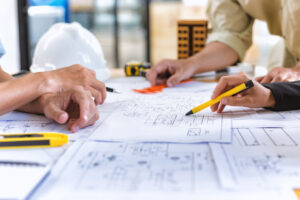
Summary
There are other technologies currently available to reline piping systems, which are being approved through the alternate materials, design and methods of construction and equipment provision. Section 717 of the IPC and section P3011 of the IRC as written allow other approved materials and technologies currently available in the industry.
Note: When an alternate material or method is proposed for construction, it is obligatory for the code official to determine whether this alternative is, in fact, an equivalent to the methods prescribed by the code. Supporting data providing evidence of this equivalency are required to be supplied by an approved source that the code official finds dependable and factual. The ICC Evaluation Services®(ICC-ES) is one example of an agency that provides research reports for alternative materials and methods.
To order the 2021 IPC or IRC, Commentaries or other support references, visit the Code Council’s store.








